The Mercer Girls or Mercer Maids were women who chose to move from the east coast of the United States to the Seattle area in the 1860s at the invitation of Asa Mercer. Mercer, an American who lived in Seattle, wanted to "import" women to the Pacific Northwest to balance the gender ratio. The women were drawn by the prospect of moving to a boomtown with a surplus of bachelors. These events formed the basis of the television series Here Come the Brides.

Women's suffrage was first granted in Utah in 1870, in the pre-federal period, decades before statehood. Among all U.S. states, only Wyoming granted suffrage to women earlier than Utah. Because Utah held two elections before Wyoming, Utah women were the first women to cast ballots in the United States after the start of the suffrage movement. However, in 1887 the Edmunds–Tucker Act was passed by Congress in an effort to curtail Mormon influence in the territorial government, disallowing the enfranchisement of the women residents within Utah Territory. Women regained the vote upon Utah statehood in 1896, when lawmakers included the right in the state constitution.
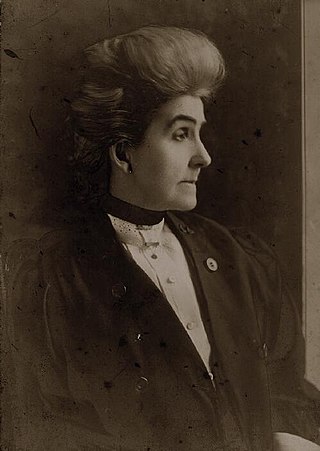
Phoebe Wilson Couzins was one of the first female lawyers in the United States. She was the second woman to serve as a licensed attorney in Missouri and the third or fourth to be a licensed attorney in the United States. She was the first woman admitted to the Missouri and Utah bars, and was also admitted to the Kansas and Dakota Territory bars. She was the first female appointed to the U.S. Marshal service. After her career in law, she played an active part in the Suffrage movement.

Emma Smith DeVoe was an American women suffragist in the early twentieth century, changing the face of politics for both women and men alike. When she died, the Tacoma News Tribune called her Washington state's "Mother of Women's Suffrage".
This timeline highlights milestones in women's suffrage in the United States, particularly the right of women to vote in elections at federal and state levels.

Women's suffrage was established in the United States on a full or partial basis by various towns, counties, states, and territories during the latter decades of the 19th century and early part of the 20th century. As women received the right to vote in some places, they began running for public office and gaining positions as school board members, county clerks, state legislators, judges, and, in the case of Jeannette Rankin, as a member of Congress.
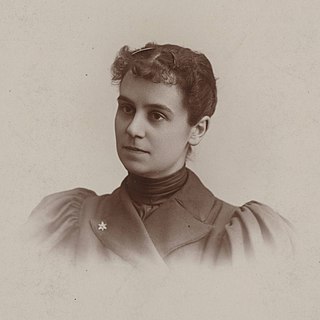
Cora Eliza Smith Eaton King was an American suffragist, physician and mountaineer. She was the first woman in North Dakota licensed to practice medicine.

The women's suffrage movement in Washington was part of the broader Women's suffrage movement in the United States. In the state of Washington, women gained and lost the right to vote repeatedly in the late 19th and early 20th centuries.
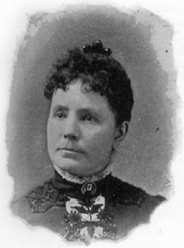
Emily Burton Ketcham was an American suffragist.

Charlotte Ives Cobb Kirby was an influential and radical women's rights activist and temperance advocate in the state of Utah as well as a well-known national figure. Charlotte was born in Massachusetts and at seven years of age moved to Nauvoo, Illinois with her mother, an early member of the Church of Jesus Christ of Latter-day Saints. There, without divorcing father Henry Cobb, her mother became Brigham Young's second plural wife. They then moved to Utah in 1848. Charlotte, previously a plural wife herself, spoke out against polygamy and gained much opposition from polygamous women suffragists because of it. Her first marriage was to William S. Godbe, the leader of the Godbeite offshoot from the LDS Church. After divorcing Godbe, Kirby married John Kirby, a non-LDS man, and they were together until Charlotte's death in 1908. Charlotte was a leading figure of the Utah Territory Woman Suffrage Association, and served as a correspondent to the government and other suffragist organizations, including the National Women's Suffrage Association. Charlotte often traveled to the East Coast to deliver lectures regarding women's rights and temperance, the first Utah woman and the first woman with voting rights to speak to national suffragist audiences. Charlotte Ives Cobb Kirby died on January 24, 1908, at age 71 in Salt Lake City, Utah.
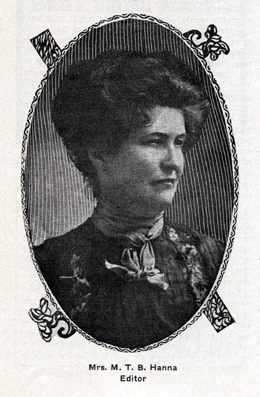
Missouri T. B. Hanna (1857–1926), born Missouri Saunders, was an American suffragist, journalist, publisher and property developer from the state of Washington. She resided in Edmonds for most of her adult life.

The women's suffrage movement began in California in the 19th century and was successful with the passage of Proposition 4 on October 10, 1911. Many of the women and men involved in this movement remained politically active in the national suffrage movement with organizations such as the National American Women's Suffrage Association and the National Woman's Party.
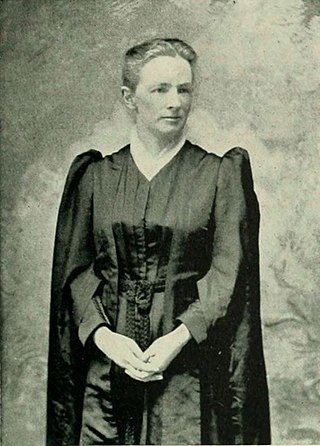
Eliza Mason Tupper Wilkes was an American suffragist and Unitarian Universalist minister.
Adella M. Parker was an American suffragist, politician, lawyer, journalist, and teacher who lived in Seattle, Washington. She was a state representative for District 37 in Washington from 1935 to 1937. In 1909, she was the president of the Washington College League.

This is a timeline of women's suffrage in Utah. Women earned the right to vote on February 12, 1870 while Utah was still a territory. The first woman to vote under equal suffrage laws was Seraph Young on February 14, 1870. During this time, suffragists in Utah continued to work with women in other states to promote women's suffrage. Women continued to vote until 1887 when the Edmunds-Tucker Act was passed. When Utah was admitted as a state in 1896, women regained the right to vote. On September 30, 1919 Utah ratifies the Nineteenth Amendment. Native American women did not have full voting rights in Utah until 1957.

Women's suffrage began in North Dakota when it was still part of the Dakota Territory. During this time activists worked for women's suffrage, and in 1879, women gained the right to vote at school meetings. This was formalized in 1883 when the legislature passed a law where women would use separate ballots for their votes on school-related issues. When North Dakota was writing its state constitution, efforts were made to include equal suffrage for women, but women were only able to retain their right to vote for school issues. An abortive effort to provide equal suffrage happened in 1893, when the state legislature passed equal suffrage for women. However, the bill was "lost," never signed and eventually expunged from the record. Suffragists continued to hold conventions, raise awareness, and form organizations. The arrival of Sylvia Pankhurst in February 1912 stimulated the creation of more groups, including the statewide Votes for Women League. In 1914, there was a voter referendum on women's suffrage, but it did not pass. In 1917, limited suffrage bills for municipal and presidential suffrage were signed into law. On December 1, 1919, North Dakota became the twentieth state to ratify the Nineteenth Amendment.
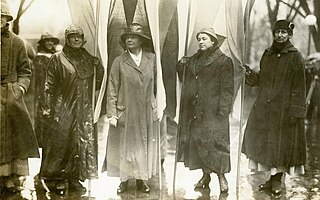
This is a timeline of women's suffrage in North Dakota. Women's suffrage in North Dakota began while it was still part of the Dakota Territory. In 1879, women in the territory gained the right to vote in school meetings. Later, this was more formalized in 1883, providing women separate ballots for school issues. After North Dakota was a state, suffragists continued to work for full suffrage. A referendum on equal suffrage took place in 1914, but failed. In 1917, women gained the right to vote in municipal and presidential elections. On December 1, 1919, North Dakota became the 20th state to ratify the Nineteenth Amendment.

Amalia Post was an American suffragist. She had been a leader in the woman suffrage movement for 25 years and was largely instrumental in having the franchise granted women in Wyoming Territory by the 1st Wyoming Territorial Legislature in 1869.

This is a timeline of women's suffrage in South Dakota. The early history of women's suffrage in the state is shared with North Dakota. When South Dakota became a state, it held a voter referendum in 1890 on an equal suffrage amendment. This effort failed, but suffragists continued to organize and lobby the legislature to pass voter referendums. None passed until 1918. South Dakota ratified the Nineteenth Amendment on December 4, 1919.

















